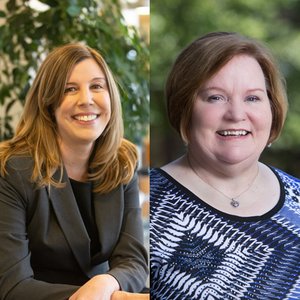People-first language: A strengths based strategy for addressing diversity
Although written communication is often intended to be concise, it's standard and respectful to use people-first language
This spring, the University website introduced virtual reality (VR) culture at UNR by underscoring a powerful video and article about Evan Gadda, a person with a disability, and his adventures experiencing BurningMan and Tahoe through VR. In the University's excitement to share this incredible story, one detail was missed. That is, the University introduced Evan as a disabled individual until receiving emails from Drs. Walsh and Bingham, who suggested people-first language as a way to respectfully introduce and address individuals with disabilities. The University quickly amended the article to reflect people-first language. People-first language emphasizes placing the person first and then the descriptor (e.g., an individual with a disability rather than a disabled person). Although written communication is often intended to be as concise as possible, it is standard and respectful to maintain use of people-first language.
In fields such as human development and family studies, education, psychology, and many more, there are guidelines on people-first language. The University's Style Guide (www.unr.edu/marcom/style-guide) will now include people-first language, as well as preferred terms for persons with disabilities.
How does people-first language influence strengths? There are several strengths characteristics in the literature (e.g. DeFrain & Asay, 2007) and we consider how these strengths are influenced by people-first language or lack thereof. Some strengths include that human beings have the right to feel safe and comfortable and that challenges build strengths.
When people respect each other and promote social acceptance, collaboration, and unity, people-first language can help individuals and communities overcome challenges. When people do not use people-first language, it implicitly teaches that such individuals are abnormal or unworthy of the same respect as other people. Guidelines and laws presume to teach people about what is right and just. The strengths-based perspective has been part of special education law since 1990 when the Education for All Handicapped Children Act was retroactively changed to the Individuals with Disabilities Education Act. This law has been in effect for nearly 30 years and yet, as a society, we still hear labels that can be considered derogatory.
Educators and communities should help all individuals feel welcome and respected. People-first language, or respectful language, matters. When we put a title or descriptor before a person's name, we set the stage to trigger biases, stereotyping, prejudices, and the "isms" (ableism, sexism, racism, classism, and the like). People facing stressors or other challenges have opportunities to develop strengths and to handle adversity-by placing these people before their descriptors, we help to give everyone a fair opportunity to engage and learn.
From personal experience and experiences from others, we have seen firsthand the result of people-first language from individuals who have so much to teach us. People First is the world's oldest and best known self-advocacy organization that is run by and for people with developmental disabilities. In our State, People First of Nevada worked to promote the passage of Nevada's Person First Respectful Language Bill (SB 491) in 2007. The bill states that all legislative documents use respectful language when referring to people with disabilities.
In our roles as professors, we find that Person First Language is often new to our students. A valuable resource is the work of Kathie Snow, who provides many articles and other guidelines through her website www.disabilityisnatural.com emphasizing the dignity that should be applied to all, regardless of challenges or abilities that might be different from our own. We encourage our students to practice person first language within our classrooms, where we strive to demonstrate appropriate phrases and terms in a non-threatening environment. Key to helping others adapt their own communication practices to show respect for all is setting the example in our own work. We are appreciative of the response from the University signifying that person first language will be the required media standard.





